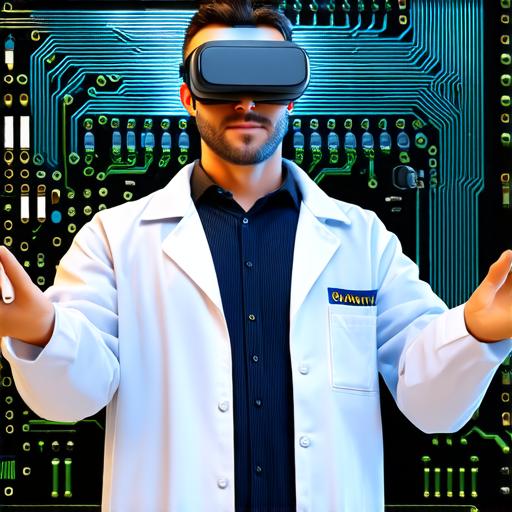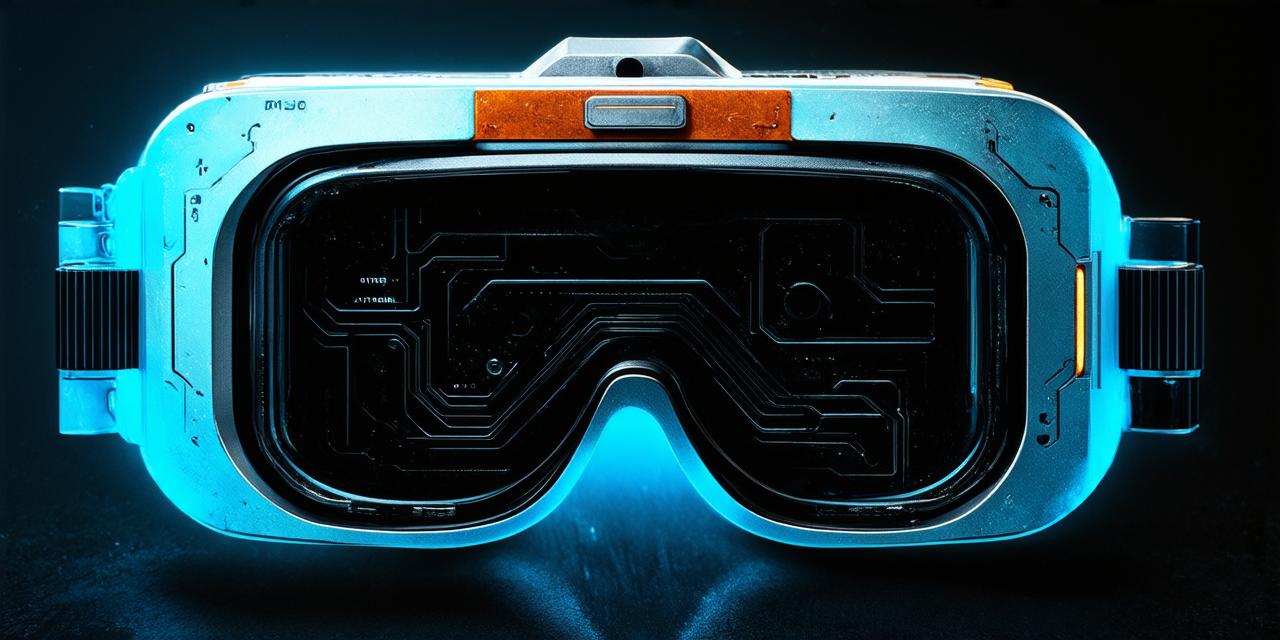Inventors of Virtual Reality Goggles
The concept of virtual reality can be traced back to ancient times when people would use tools to create an illusion of depth on flat surfaces. However, the first formal attempt to create a VR system was made in 1962 by Ivan Sutherland, a computer science professor at MIT. He created the “Sword of Damocles,” a large, pendulum-like device that suspended a display screen above the user’s head and allowed them to look around in a simulated environment.

In the 1980s, researchers at the University of California, Santa Barbara (UCSB) developed the first VR headset called “Crescent.” This device used a pair of LCD screens mounted on a helmet to create a stereoscopic display, allowing users to see two different perspectives simultaneously. In 1986, the UCSB researchers also created the “Virtual Reality Theater,” which was the first VR system designed for multiple users.
However, it wasn’t until the 1990s that VR technology began to gain widespread popularity. The first commercially available VR headset was the “VR Magic Wall” developed by Virtual reality Systems Inc. (VRSI) in 1992. This device used a large screen mounted on a wall to create an immersive experience for users.
In 1995, Sharp Corporation introduced the first wearable VR headset, called “Sharp Total Immersion.” This device used a pair of LCD screens mounted on a helmet and allowed users to look around in a simulated environment while seated or standing. However, the device was bulky and expensive, making it difficult for consumers to afford.
In 1998, Sony Corporation introduced the “PlayStation Eye,” which was the first VR headset designed specifically for use with the PlayStation gaming console. This device allowed users to experience immersive gaming environments while sitting in front of their TV.
Evolution of Virtual Reality Goggles
Over the years, virtual reality goggles have undergone significant changes in design and functionality. In the early days, VR headsets were bulky and expensive, making them difficult for consumers to afford. However, with advancements in technology, the size and weight of VR headsets have been significantly reduced.
One of the key milestones in the evolution of virtual reality goggles was the introduction of Oculus Rift in 2016. This device used a high-resolution display screen and advanced tracking technology to create a highly immersive experience for users. The Oculus Rift quickly became one of the most popular VR headsets on the market, and its success paved the way for the widespread adoption of VR technology.
Another significant milestone was the introduction of the HTC Vive in 2016. This device used a similar display screen and tracking technology to create an even more immersive experience for users. The HTC Vive quickly gained popularity among gamers and developers alike, and its success helped to further establish the VR market.
In recent years, we have seen the emergence of standalone VR headsets such as the Oculus Quest 2. This device does not require a separate computer or console to function, making it more accessible and affordable for consumers. The Oculus Quest 2 has been highly successful, and its popularity has helped to drive down the cost of VR technology even further.
The Future of Virtual Reality Goggles
As virtual reality technology continues to evolve, we can expect to see even more advancements in VR headset design and functionality. One area where we are likely to see significant developments is in the field of haptic feedback. Haptic feedback is a technology that allows users to feel sensations in their virtual environment, making the experience even more immersive.
Another area where we may see advancements is in the field of eye-tracking. Eye-tracking technology can be used to create even more realistic and interactive environments by tracking the user’s gaze and adjusting the display accordingly. This technology has already been incorporated into some VR headsets, but it is likely to become even more prevalent in the future.
In addition to these advancements, we may also see the emergence of new types of VR headsets that are specifically designed for different applications. For example, we may see the development of specialized headsets for use in training and simulation applications, or for use in medical settings.
Conclusion
The history of virtual reality goggles is a fascinating journey through time. From simple cardboard boxes to sophisticated headsets, the evolution of VR technology has been nothing short of remarkable. The inventors and pioneers who have worked on VR technology over the years have paved the way for the widespread adoption of this exciting technology.
As virtual reality continues to evolve, we can expect to see even more advancements in VR headset design and functionality. From haptic feedback to eye-tracking, there are many exciting developments on the horizon that will make VR experiences even more immersive and interactive. Whether you’re a developer, gamer, or simply someone who is interested in the latest technology, virtual reality is sure to continue captivating and inspiring us for years to come.
